 by our College Data Analytics Team
by our College Data Analytics TeamUNI total enrollment is approximately 9,507 students. 7,632 are undergraduates and 432 are graduate students.
Male/Female Breakdown of Undergraduates
The full-time UNI undergraduate population is made up of 61% women, and 39% men.
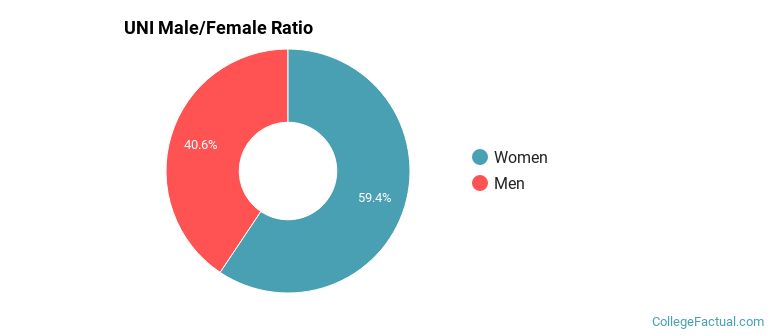
For the gender breakdown for all students, go here.
UNI Racial/Ethnic Breakdown of Undergraduates

| Race/Ethnicity | Number |
|---|---|
| White | 6,382 |
| Hispanic | 366 |
| Unknown | 243 |
| Multi-Ethnic | 209 |
| Black or African American | 179 |
| International | 141 |
| Asian | 98 |
| Native Hawaiian or Pacific Islander | 6 |
See racial/ethnic breakdown for all students.
Male/Female Breakdown of Graduate Students
About 75% of full-time grad students are women, and 25% men.
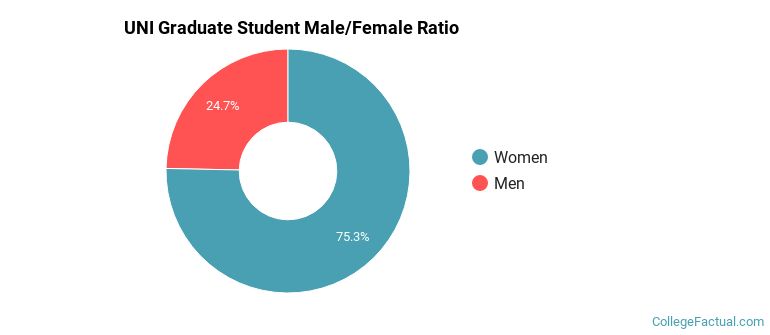
For the gender breakdown for all students, go here.
UNI Racial-Ethnic Breakdown of Graduate Students
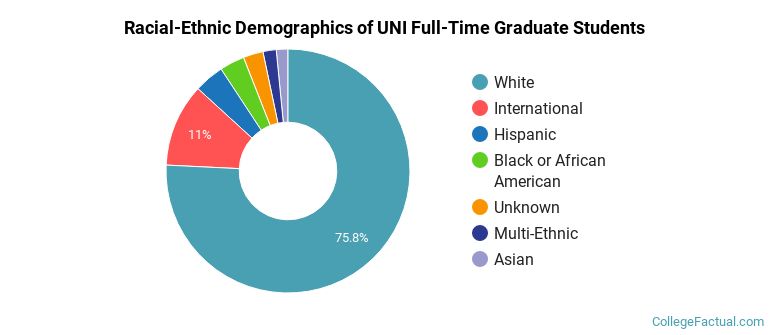
| Race/Ethnicity | Number |
|---|---|
| White | 339 |
| International | 31 |
| Hispanic | 19 |
| Black or African American | 18 |
| Multi-Ethnic | 16 |
| Asian | 6 |
| Unknown | 3 |
| Native Hawaiian or Pacific Islander | 0 |
See racial/ethnic breakdown for all students.
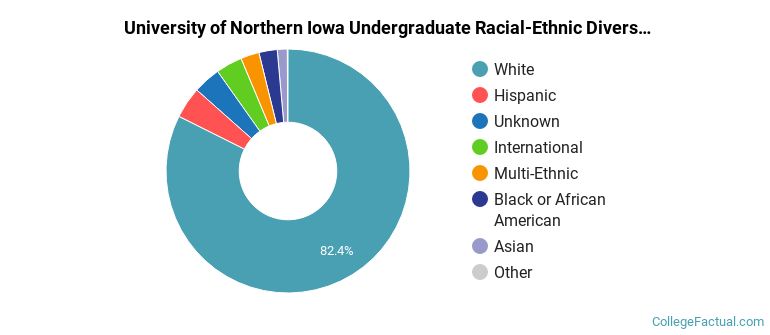
| Race/Ethnicity | Number |
|---|---|
| White | 7,784 |
| Hispanic | 442 |
| International | 336 |
| Unknown | 290 |
| Black or African American | 251 |
| Multi-Ethnic | 251 |
| Asian | 136 |
| Native Hawaiian or Pacific Islander | 6 |

There are approximately 5,839 female students and 3,668 male students at UNI.
UNI ranks 1,541 out of 2,183 when it comes to geographic diversity.
8.08% of UNI students come from out of state, and 1.05% come from out of the country.

The undergraduate student body is split among 14 states (may include Washington D.C.). Click on the map for more detail.
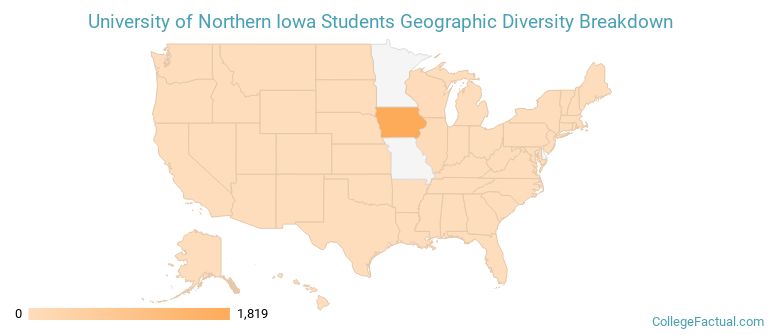
| State | Amount |
|---|---|
| Iowa | 1,819 |
| Illinois | 67 |
| Wisconsin | 20 |
| Nebraska | 4 |
| Arizona | 2 |
Students from 71 countries are represented at this school, with the majority of the international students coming from Saudi Arabia, China, and Mexico.
Learn more about international students at UNI.
A traditional college student is defined as being between the ages of 18-21. At UNI, 58.05% of students fall into that category, compared to the national average of 60%.

| Student Age Group | Amount |
|---|---|
| 20-21 | 4,006 |
| 18-19 | 2,879 |
| 22-24 | 2,628 |
| 35 and over | 937 |
| 25-29 | 913 |
| 30-34 | 451 |
| Under 18 | 0 |
Footnotes
*The racial-ethnic minorities count is calculated by taking the total number of students and subtracting white students, international students, and students whose race/ethnicity was unknown. This number is then divided by the total number of students at the school to obtain the racial-ethnic minorities percentage.
References
Department of Homeland Security Citizenship and Immigration Services
Image Credit: By Feddacheenee under License